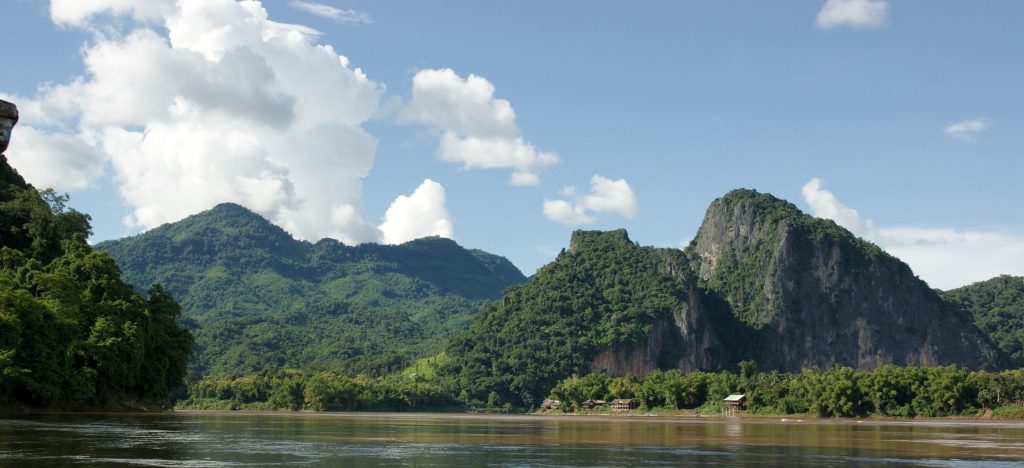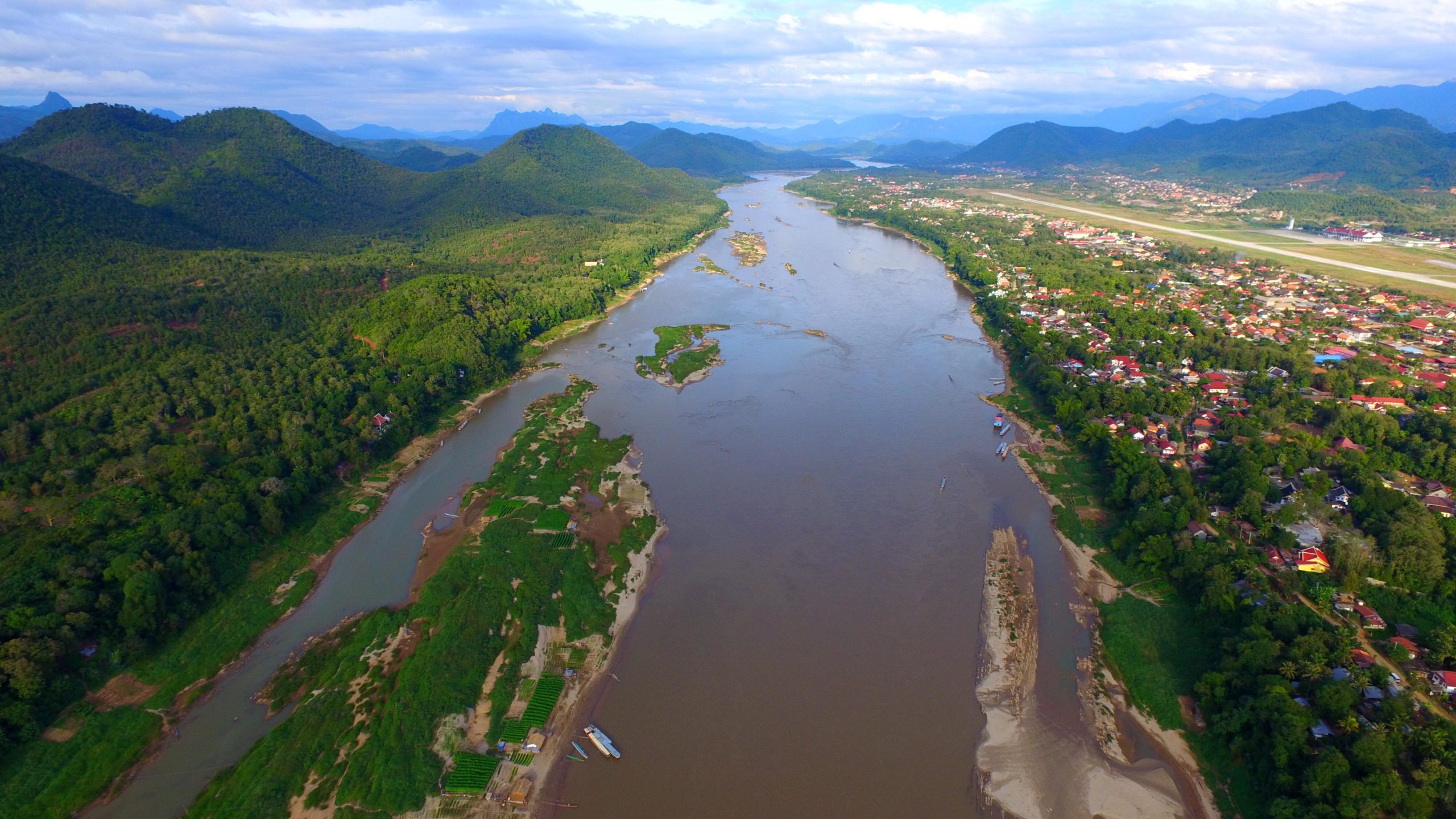by Gary Lee, Southeast Asia Program Director for International Rivers, Sarinee Achavanuntakul, Head of Research for Fair Finance Thailand, and Eugene Simonov, Co-founder, Coordinator and Conservation Science Expert for Rivers without Boundaries.
This article originally appeared in Mongabay
- This month’s World Heritage meeting represents a critical opportunity for the UNESCO World Heritage Committee (WHC) to protect rivers and the World Heritage sites and cultures that depend on them.
- The WHC is charged with protecting sites around the world deemed of the highest cultural and natural values. The increasing impact of dams on World Heritage sites has prompted global outcry, most recently in the Selous Game Reserve in Tanzania and Luang Prabang in Laos.
- Beyond the WHC’s role in protecting existing sites from harm, governments, financiers and the hydropower industry must adopt clear ‘No-Go’ zones in, near or with impact on our World Heritage sites.
- This post is a commentary. The views expressed are those of the author, not necessarily Mongabay.
When the UNESCO World Heritage Committee (WHC) meets from July 16 to 31, they will be tasked with addressing urgent threats to some of the world’s most treasured sites of priceless natural and cultural heritage. Among the issues the committee must confront is the growing threat that dams pose to some of the world’s most iconic World Heritage sites.
A recent study found that over 500 dams under construction or planned worldwide would be built in protected areas, while dams and other water infrastructure projects threaten at least 80 World Heritage sites. This number is only expected to grow as dam developers, faced with a dwindling number of viable hydro sites, pursue increasingly reckless projects such as the Batang Toru dam, which experts say could precipitate the extinction of the newly discovered Tapanuli orangutan. The increasing impact of dams on World Heritage sites has prompted a global outcry, most recently in the case of the Selous Game Reserve, a World Heritage site recognized as a biodiversity hotspot and one of the largest protected areas for African wildlife. The Tanzanian government’s decision to proceed with construction of the Julius Nyerere Dam in the Selous prompted a nearly unprecedented proposal from UNESCO to remove it from the list altogether.
Luang Prabang: Priceless cultural and natural heritage threatened
Meanwhile, history is in danger of repeating itself in Laos, where the planned Luang Prabang dam threatens the historic city it’s named for. Luang Prabang, the old royal capital, lies in the lush valley at the confluence of the Mekong and Nam Khan rivers in northern Laos. Listed as a World Heritage Site in 1995, Luang Prabang is a stunning fusion of French colonial architecture and the sunlit domes of Buddhist temples, that exist “in perfect harmony with nature.” The culture of Luang Prabang developed as a thriving city inextricably tied to a living river. We cannot simultaneously preserve the heritage and culture of a World Heritage city while destroying its raison d’être. Heritage specialist Minja Yang, who in 1991 was UNESCO’s chief of mission for safeguarding Cambodia’s Angkor Wat and former UNESCO director in New Delhi explained, “UNESCO signed the 1995 Agreement with the Lao government based on the unique links between nature, culture, and history along the confluence of the Mekong and Khan rivers”.
Despite this World Heritage status, the Mekong River, which flows through and is an integral part of Luang Prabang’s history, culture, and way of life, is under threat. A Thai-led consortium is planning to build a massive hydropower project, 25 kilometers (15.5 miles) upstream from Luang Prabang. Given the proposed dam’s size and location (including its proximity to Luang Prabang City), the dam is categorized as an “extreme risk”. The dam will have major environmental impacts on the river system and surrounding area and as a 2020 Mekong River Commission report states, “Any impacts of a dam break, or the flood operations may also lead to the loss of life for citizens from many countries. For the purposes of this Technical Review Report, impacts on Luang Prabang will therefore be considered as ‘transboundary in nature,’ as this will be of concern to the global community.”
Concerned about the potential adverse impacts the Luang Prabang dam would have on the World Heritage site’s outstanding values, in 2012 the WHC requested the Government of Laos to undertake and submit a heritage impact assessment. Yet nine years on, no such assessment has been conducted, and in the draft decisions published in late June, the WHC recommended the Government of Laos halt all construction activities until a full heritage impact assessment is carried out.
The environmental and social impact assessments undertaken to date have also been found to be flawed with numerous gaps. Neighboring countries that share the Mekong River are calling on Laos to conduct more rigorous transboundary impact assessments.
Beyond the World Heritage site, the dam threatens the rich biodiversity and ecological integrity of the Mekong River. The Mekong River is the world’s largest inland freshwater fishery. Feeding more than 65 million people living within its basin, the river’s fisheries supply its communities with up to 80% of their animal protein needs. Yet this stunning, thriving river system, with aquatic biodiversity second only to the Amazon, is increasingly threatened by ill-conceived dams, many of which are not needed to meet the region’s energy and water needs. Luang Prabang dam, for example, plans to sell electricity to Thailand, a country, which has a massive oversupply of electricity (equivalent to at least 10 Luang Prabang dams). Decision-making on Mekong dams is done on a “project-by-project” basis, ignoring the larger context and failing to have the foresight to manage the cumulative and transboundary impacts of a rapidly increasing cascade of existing and planned dams. Local communities, who are most impacted by dams, have largely been excluded from the decision-making processes.

The time is now to recommit and enforce protection of our world heritage
Luang Prabang is too important to our world heritage. The Lao government should stop this dam project and focus investments on truly renewable energy projects that benefit the local economy while protecting important heritage and river ecosystems and communities. The World Heritage Committee should call on the Lao government to rethink this risky and destructive project.
Luang Prabang dam is just the latest in a long line of destructive dams that jeopardize the world’s heritage, and more must be done at the global level to prevent this recurrence. The World Heritage Committee has been vocal in raising concerns about the increasing threat that dams pose, and passed a resolution in 2016 calling for the prohibition on dams within the boundaries of World Heritage sites, as well as for any dams indirectly impacting these sites to be “rigorously assessed.” This led one of world’s largest dam builders, China Three Gorges, to commit to adopting this commitment in its policies, but this is unfortunately still the exception rather than the rule.
Ultimately, the onus of protection lies with state parties, but their accountability must also be shared with the financiers who bankroll these projects and the companies that build them. It is telling that the International Hydropower Association, an industry body created to clean up the industry’s image and which has heavily promoted the false idea of “sustainable hydropower,” has been largely silent on the issue of World Heritage despite holding its last meeting at UNESCO’s headquarters in Paris. For meaningful change, it is incumbent on the dam industry as a whole to halt projects impacting World Heritage sites and establish and abide by clear No-Go zones prohibiting dams in, near, or with an impact on World Heritage sites.
World Heritage sites, such as Luang Prabang are recognized as such because they are irreplaceable and under threat. Places like Luang Prabang offer us not just a glimpse of our past but an enduring example of how life can be for communities living in harmony with nature. We should not be gambling with its future by forcing unnecessary and risky infrastructure projects that undermine the fabric of its existence, rather Luang Prabang should be cherished and protected as an inspiring place for a reimagined future in balance with nature.
Featured image: An aerial view of Luang Prabang City in Laos. Image courtesy of People’s Mekong Network

